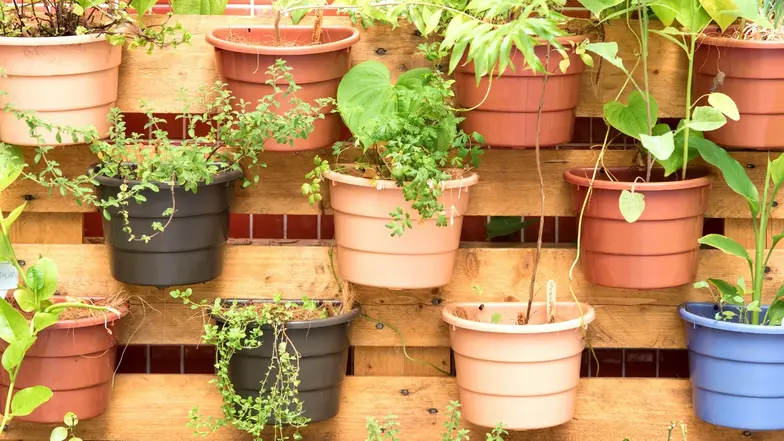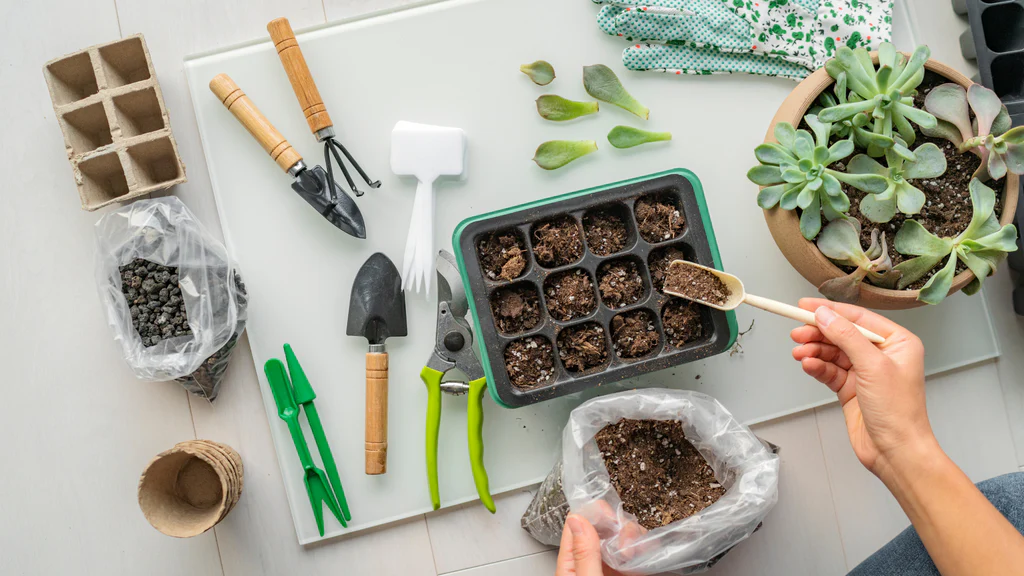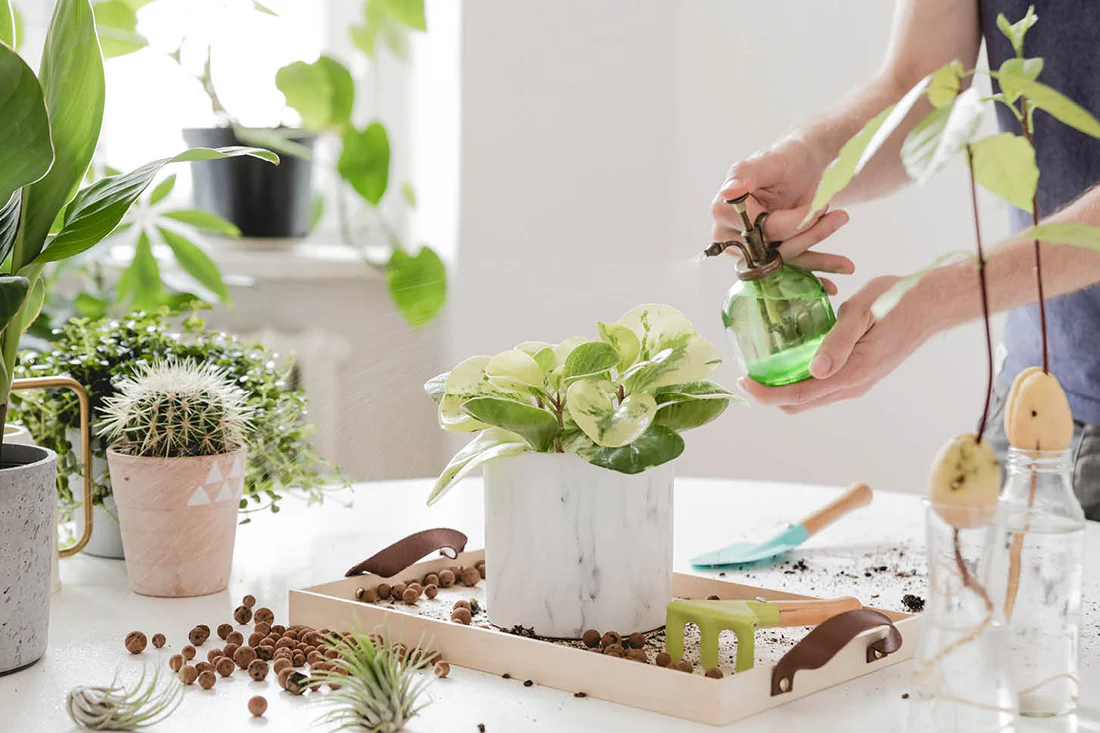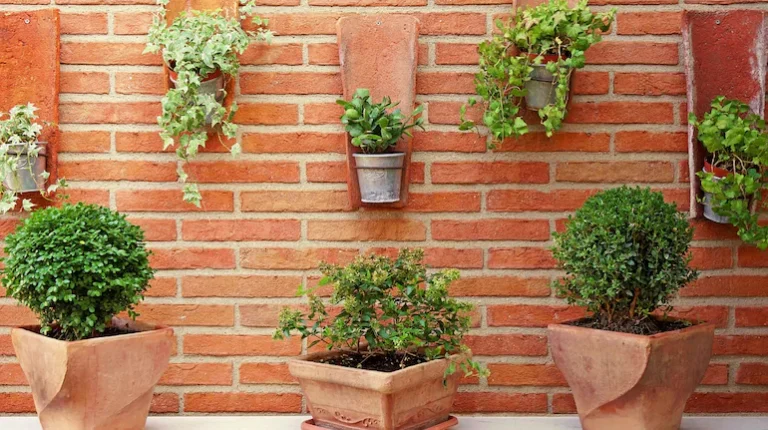Contents
Introduction: How to Create a Vertical Garden in Your Small Apartment
Are you dreaming of a lush, green garden but feel like your small apartment just doesn’t have the space? Don’t worry, you’re not alone! Many city dwellers are discovering the joy of vertical gardens as the perfect solution for bringing a touch of nature into their cozy living spaces.
So, what’s a vertical garden? Simply put, it’s a creative way to grow plants vertically—using walls, fences, or even specially designed structures—so you can enjoy greenery without needing extra floor space. It’s like having your very own mini-jungle right in your apartment!
Why are vertical gardens such a big deal? For starters, they make the most of your limited space. Instead of spreading out on the floor, plants climb up, creating a beautiful, green wall that can brighten up any room. They’re also great for improving air quality and bringing a bit of the outdoors inside, which is especially nice if you’re missing that fresh, open-air feeling of a garden.
In this guide, we’ll walk you through everything you need to know to set up your own vertical garden. From choosing the best plants for your space to picking the right system and keeping everything healthy and thriving, we’ve got you covered. By the end, you’ll have all the tools and tips to turn even the smallest apartment into a green paradise.
Ready to dive in and transform your space? Let’s get started on creating a stunning vertical garden that will make your apartment the envy of all your friends!
Planning Your Vertical Garden
Alright, so you’re ready to dive into the world of vertical gardens! But before we start hanging plants on your walls, let’s take a moment to plan things out. This is where the fun begins, and getting it right will set you up for a garden that looks fantastic and grows well.

Assessing Your Space
First things first: take a good look at your space. Measure the wall or area where you want to set up your vertical garden. You don’t need to be super precise, but having a rough idea of the dimensions will help you choose the right system and number of plants.
Next, think about how much natural light your space gets. Is it sunny all day, or is it more on the shaded side? Some plants thrive in bright light, while others are happy with a bit less. This will help you decide which plants will work best in your space.
Also, consider the location. If you’re putting your garden near a window, that’s great for plants that need a lot of sunlight. If it’s in a more shaded spot, you might want to opt for plants that are okay with lower light levels. And keep in mind any sources of heat or drafts, as these can affect plant health.
Choosing the Right Plants
Now for the exciting part—choosing your plants! Your options will depend on the amount of light in your apartment and how much effort you want to put into plant care. Here’s a quick rundown:
- Low-Light Plants: These are perfect for those shadier spots. Think Pothos, Snake Plants, or ZZ Plants. They’re hardy and don’t need much light to thrive.
- Medium-Light Plants: If you’ve got a bit more natural light, go for Spider Plants or Ferns. They add a lovely touch of greenery and are relatively easy to care for.
- High-Light Plants: For bright spots, herbs like Basil or Mint and Succulents work wonders. They love the sunshine and will flourish in well-lit areas.
Selecting the Right Vertical Garden System
Once you’ve figured out your plants, it’s time to pick a system for growing them. There are a few popular options:
- Wall-Mounted Systems: These are great for small spaces. You can use shelves, pockets, or panels to hold your plants. They attach directly to the wall and make it easy to arrange your garden in a visually appealing way.
- Hanging Systems: Think planters or pots that hang from the ceiling or wall. These are perfect if you want something a bit more flexible and dynamic.
- Freestanding Systems: If you have a bit more room, consider mobile garden towers or racks. They can be moved around and adjusted as needed, giving you flexibility in how you arrange your garden.
By planning carefully and choosing the right plants and system, you’ll be well on your way to creating a vertical garden that’s not just beautiful but also perfectly suited to your apartment. So, grab your measuring tape and start dreaming up your green oasis!
Materials and Tools
Now that you’ve got your plan in place and know which plants you want, it’s time to gather everything you need to bring your vertical garden to life. Think of this as your shopping list for creating a thriving green wall. Here’s a rundown of what you’ll need:

Materials for Vertical Gardens
First up are the planters and containers. These come in all shapes and sizes, so choose ones that fit your space and style. You can go with small pots for individual plants or larger containers that hold multiple plants. Just make sure they have good drainage holes to keep your plants healthy.
Next, you’ll need soil and growing mediums. Most plants do well with standard potting soil, but some might need a bit more specific care. For instance, succulents prefer a mix that drains well, while ferns like a more moisture-retentive mix. Check the requirements for your plants and choose accordingly.
Don’t forget about fertilizers and watering solutions. Plants need food to grow, and a good fertilizer can make all the difference. You might also want to get a watering can or a drip irrigation system if you’re setting up something a bit more elaborate. Drip systems are great for providing consistent moisture without the hassle of manual watering.
Tools and Accessories
Now let’s talk tools. You’ll need a few basic potting tools to help you get everything set up. A small trowel for planting, gloves to keep your hands clean, and maybe some pruning shears for trimming your plants as they grow.
For watering, a watering can is a must, especially if you’re dealing with multiple plants. If you want to go high-tech, consider a drip irrigation system. These systems are perfect for keeping your plants consistently hydrated with minimal effort.
Lastly, if you’re using a wall-mounted system, you’ll need some wall anchors and brackets to secure everything in place. Make sure you have the right tools for this, like a drill and a level, to ensure your garden is safely and securely mounted.
With these materials and tools, you’ll be all set to create a vertical garden that’s not only beautiful but also well-cared-for. So, gather your supplies and get ready to start building your green oasis!
Installation and Setup
Alright, you’ve got your materials, tools, and plants all ready—now it’s time to roll up your sleeves and get your vertical garden up and running. Here’s a step-by-step guide to help you through the installation and setup process, making sure everything goes smoothly.
Preparing the Wall
First, you’ll need to get your wall or space ready. Start by cleaning the surface where you’ll be mounting your garden. Dust, dirt, or grease can affect how well your wall anchors stick, so give it a good wipe-down.
Next, you’ll need to figure out where to install your wall anchors or brackets. This step is crucial for ensuring your garden stays securely in place. Use a level to make sure everything is straight, and mark the spots where you’ll need to drill. If you’re unsure about drilling into your wall, check for any hidden wires or pipes. Once you’ve marked your spots, drill the holes and insert your anchors.
Arranging Plants
With your wall prepped, it’s time to get creative with arranging your plants. Think about the overall look you want to achieve. You can go for a uniform design with similar plants or mix it up with a variety of species for a more eclectic vibe.
Consider the growth habits of your plants when arranging them. Place taller plants towards the top and shorter ones below so that every plant gets the light and space it needs. Also, think about how they’ll look from different angles—after all, your vertical garden will be a focal point in your apartment!
Mounting and Hanging
Now comes the fun part: mounting and hanging your garden. If you’re using wall-mounted systems, attach the brackets or panels to the wall according to your markings. Make sure they’re securely fastened before adding any plants.
For hanging systems, whether it’s planters or pots, make sure they’re securely hung and evenly spaced. If you’re using macramé hangers, check that they’re tied correctly and balanced. You want everything to be stable so that your plants can thrive without any risk of falling.
Safety Considerations
As you’re setting everything up, keep safety in mind. Make sure all your mounts and hangers are securely installed to prevent any accidents. Double-check that your plants are well-positioned and won’t interfere with any electrical outlets or vents.
And there you have it—your vertical garden is now set up and ready to start growing! With everything in place, you’ll soon see your green wall coming to life and adding a touch of nature to your apartment. Enjoy the process and watch your garden transform your space into a beautiful, vibrant oasis!
Plant Care and Maintenance
Congratulations! Your vertical garden is up and looking fabulous. But the work doesn’t stop here. To keep your green wall thriving and vibrant, you’ll need to give your plants a bit of love and attention. Here’s a straightforward guide to keeping your vertical garden in top shape.

Watering
Watering is crucial for plant health. The amount and frequency will depend on the type of plants you have and the environment they’re in. Most plants need watering when the top inch of soil feels dry, but some might need it more or less often.
For a simple approach, stick your finger into the soil to check moisture levels. If it feels dry, it’s time to water. Be careful not to overdo it—too much water can lead to root rot. If you’re using a drip irrigation system, make sure it’s set up correctly to provide consistent moisture without flooding.
Fertilizing
Plants need food to grow strong and healthy, so don’t forget to fertilize them. The type of fertilizer you use will depend on your plants. A general-purpose liquid fertilizer works for many types of plants, but some might need specific nutrients. Follow the instructions on the fertilizer package for the right amount and frequency.
Fertilize your plants during their growing season (typically spring and summer) and reduce or stop during the winter months when growth slows down. Over-fertilizing can be as harmful as under-fertilizing, so keep an eye on your plants and adjust as needed.
Pruning and Training Plants
Pruning helps keep your plants healthy and looking their best. Trim off any dead or yellowing leaves to encourage new growth and prevent disease. For plants that grow quickly or have a tendency to spread, regular pruning helps maintain their shape and prevents them from becoming too unruly.
Training plants involves guiding their growth to fit your vertical garden design. Use plant ties or clips to direct vines and stems where you want them. This not only helps with aesthetics but also ensures that all plants get enough light and space to thrive.
By following these care tips, you’ll keep your vertical garden lush and thriving, turning your apartment into a green haven. Enjoy the process of nurturing your plants and watching your garden grow and flourish!
Troubleshooting Common Issues
Even with the best planning and care, you might run into a few hiccups with your vertical garden. No worries—most problems are easy to fix with a little know-how. Here’s a handy guide to help you troubleshoot common issues and keep your garden looking its best.
Pest and Disease Management
Sometimes, pests or diseases can show up and cause trouble for your plants. Here’s how to handle them:
- Identifying Pests: Look out for common pests like spider mites, aphids, or mealybugs. You might see tiny bugs on your plants or notice leaves that look chewed up or sticky. A magnifying glass can help you spot these critters more easily.
- Treatments: For a natural approach, you can use insecticidal soap or neem oil. These are effective and gentle on your plants. If you prefer chemical treatments, follow the instructions carefully and use them sparingly. Regularly inspecting your plants can help catch pests early before they become a bigger problem.
- Preventing Diseases: Good airflow and proper watering can help prevent diseases. Avoid watering from above, which can create a humid environment that fosters mold and mildew. Instead, water at the base of the plants and ensure good ventilation around them.
Light and Temperature Adjustments
Plants need the right amount of light and temperature to thrive. If your plants aren’t looking their best, check these factors:
- Light: If your plants seem leggy or are growing slowly, they might not be getting enough light. Try moving them closer to a window or adding a grow light. Conversely, if leaves are getting scorched or turning yellow, they might be getting too much direct sunlight. Adjust their position or use a sheer curtain to filter the light.
- Temperature: Most indoor plants prefer a consistent temperature. If your apartment has extreme temperature changes, consider relocating your plants to a more stable spot. Avoid placing them near heaters, air conditioners, or drafty windows, as these can stress the plants.
Maintenance Challenges
Sometimes, you might face issues with plant growth or garden setup. Here’s how to tackle common challenges:
- Plant Decay: If plants start to decay, check for signs of overwatering or poor drainage. Make sure your containers have proper drainage holes and adjust your watering schedule accordingly. Removing affected plants and improving soil conditions can help prevent further issues.
- Nutrient Deficiencies: If your plants are showing signs of nutrient deficiencies (like yellowing leaves or poor growth), it might be time to adjust your fertilizing routine. Ensure you’re using the right type of fertilizer for your plant species and follow the recommended application rates.
By keeping an eye on these common issues and addressing them promptly, you’ll help your vertical garden stay healthy and beautiful. Enjoy troubleshooting and keeping your green oasis in top shape!
Enhancing Your Vertical Garden
Your vertical garden is already a stunning feature in your apartment, but why not take it to the next level? Adding some extra touches and features can make your green wall even more eye-catching and functional. Here’s how you can enhance your vertical garden to truly make it stand out.
Decorative Elements
One way to add personality to your vertical garden is by incorporating decorative elements. This could include:
- Decorative Pots and Planters: Choose pots and planters that complement your apartment’s décor. You can go for colorful ceramics, sleek modern designs, or rustic terracotta pots. Mixing and matching different styles can create a unique and dynamic look.
- Garden Accessories: Think about adding some charming garden accessories. Small garden statues, fairy lights, or even hanging decorations can add a touch of whimsy to your vertical garden. Just make sure they don’t overcrowd the plants or interfere with their growth.
Incorporating Additional Features
To make your vertical garden even more functional and impressive, consider these additional features:
- LED Grow Lights: If your vertical garden is in a low-light area or if you want to boost growth, LED grow lights can be a game changer. They provide the extra light that plants need to thrive, especially during darker months or in rooms with limited natural light.
- Automated Watering Systems: For convenience, an automated watering system can be a lifesaver. Drip irrigation systems or self-watering planters can help maintain consistent moisture levels with minimal effort. This is particularly useful if you have a busy schedule or a large number of plants.
- Vertical Garden Kits: Consider using a vertical garden kit if you want a more streamlined setup. These kits often come with everything you need, including planters, irrigation systems, and mounting hardware, making it easier to create a cohesive and functional garden.
By adding these decorative elements and features, you’ll not only enhance the visual appeal of your vertical garden but also improve its functionality. Whether you’re looking to create a cozy retreat or a striking focal point, these enhancements can make your green wall an even more delightful part of your apartment. Enjoy personalizing your garden and making it truly your own!
Conclusion
You’ve journeyed through the entire process of creating a vertical garden in your small apartment—from planning and setup to care and enhancements. Now it’s time to reflect on everything you’ve learned and get excited about your green oasis!
Summary of Key Points
Let’s quickly recap what we’ve covered:
- Planning Your Space: We discussed how to assess your wall space, choose the right plants based on light availability, and select the ideal vertical garden system for your needs.
- Materials and Tools: You learned about the essential materials like planters, soil, and fertilizers, as well as the tools and accessories needed for installation and maintenance.
- Installation and Setup: We walked through preparing your wall, arranging your plants, and securely mounting your vertical garden.
- Plant Care and Maintenance: You now know how to properly water, fertilize, and prune your plants, as well as how to troubleshoot common issues.
- Enhancing Your Garden: Finally, we explored ways to add decorative elements and additional features to make your vertical garden even more stunning and functional.
Encouragement to Start
You’re all set to transform your small apartment into a lush, green retreat! Creating a vertical garden is not only a fun project but also a rewarding way to bring nature indoors. Whether you’re an experienced plant enthusiast or just starting out, your new vertical garden will add beauty, freshness, and a personal touch to your living space.
Remember, the journey of growing a vertical garden is ongoing. You’ll continually learn about your plants and how they thrive, and you’ll have the joy of seeing them grow and flourish in your apartment.
Resources and Further Reading
If you’re eager to dive deeper into vertical gardening or just want more inspiration, here are some resources to check out:
- Books: Look for gardening books focused on indoor plants and vertical gardens for expert tips and ideas.
- Websites: Explore gardening blogs and forums for additional advice, tutorials, and plant care guides.
- Local Gardening Centers: Visit local stores or nurseries for plant recommendations and supplies specific to your area.
With all this information, you’re ready to embark on your vertical gardening adventure. Enjoy the process, and let your green thumb shine!



